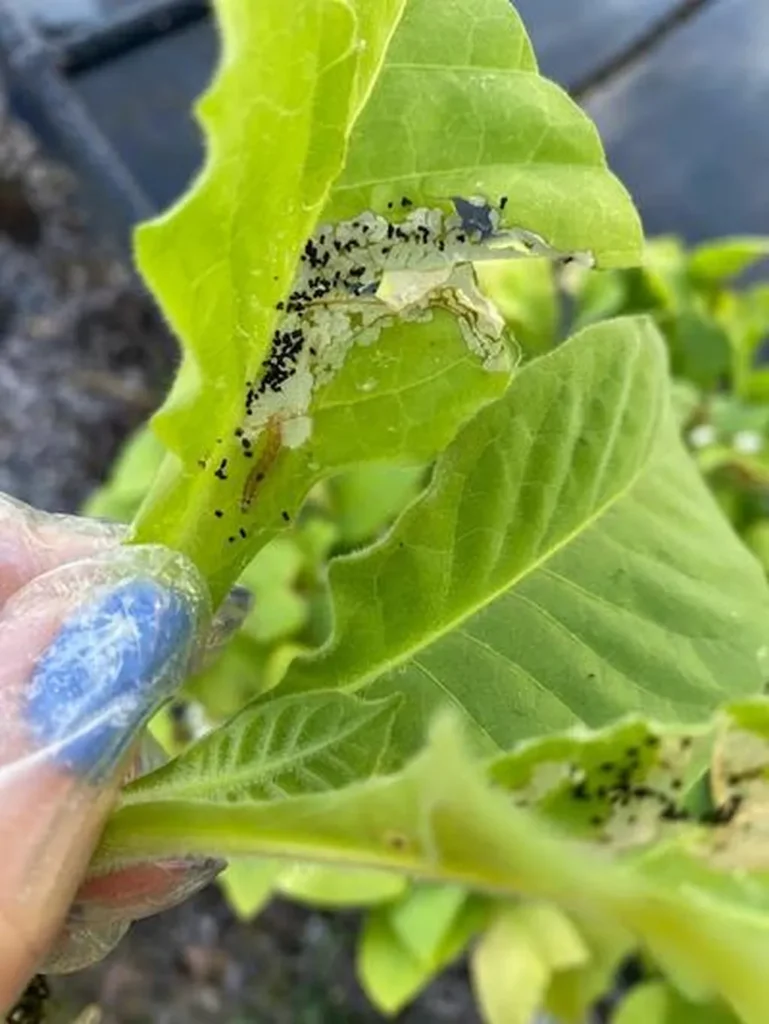In the intricate world of plant-insect interactions, a new study has uncovered how the humble potato tuber moth (PTM), Phthorimaea operculella, can reshape the microbial communities in the soils surrounding flue-cured tobacco plants. This research, led by Ganlin Sun from the College of Plant Protection at Yunnan Agricultural University in Kunming, China, and published in the journal ‘Frontiers in Plant Science’ (translated as ‘Plant Science Frontiers’), sheds light on the complex underground responses to aboveground pest infestations, offering potential pathways for more effective pest management strategies.
The study, titled “Infestation by potato tuber moth restructures microbial communities in flue-cured tobacco rhizosphere and non-rhizosphere soils,” delves into the microbial dynamics of tobacco plants under PTM feeding stress. Using advanced Illumina MiSeq sequencing, Sun and his team analyzed the microbial composition in both rhizosphere (root-zone) and non-rhizosphere soils of healthy and PTM-infested tobacco plants.
The findings reveal that PTM infestation significantly alters the microbial community structure in both soil types. “We observed that the infestation led to an enrichment of distinct microbial genera,” Sun explains. For instance, the rhizosphere soil of infested plants showed increased abundances of Gemmatimonas (bacteria) and Humicola (fungi), while the non-rhizosphere soil was enriched with Streptomyces (bacteria) and Penicillium (fungi). In contrast, healthy plants exhibited different dominant microbes, highlighting the impact of PTM feeding on soil microbial ecosystems.
One of the most intriguing aspects of the study is the alteration of potential soil functions due to PTM infestation. The research indicates a reduction in the complexity of bacterial and fungal communities in both rhizosphere and non-rhizosphere soils. Notably, there was a significant up-regulation of the symbiotroph function of fungi (Lichenized), suggesting a shift in the ecological roles of these microorganisms.
The commercial implications of this research are substantial, particularly for the agricultural sector. Understanding how aboveground pest infestations influence underground microbial communities can lead to more targeted and effective pest management practices. “This knowledge could facilitate the development of strategies that harness beneficial microbes to mitigate the impact of PTM infestations,” Sun suggests.
Moreover, the study underscores the importance of considering both aboveground and belowground interactions in agricultural ecosystems. By comprehending these complex dynamics, farmers and agronomists can adopt more holistic approaches to crop protection, ultimately enhancing yield and sustainability.
As the agricultural industry continues to face challenges from pests and diseases, research like Sun’s provides valuable insights that could shape future pest management strategies. The study not only advances our understanding of plant-microbe interactions but also paves the way for innovative solutions that could benefit the entire agricultural sector. With the findings published in ‘Frontiers in Plant Science’, this research marks a significant step forward in the quest for more sustainable and effective agricultural practices.

